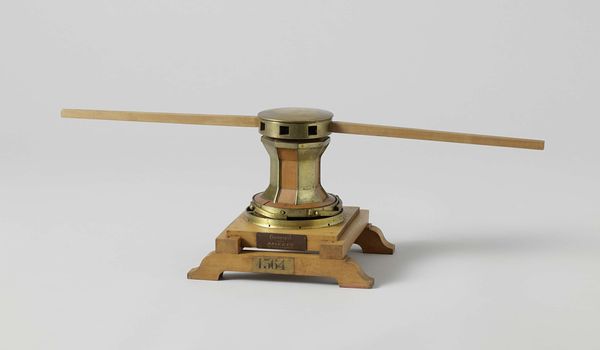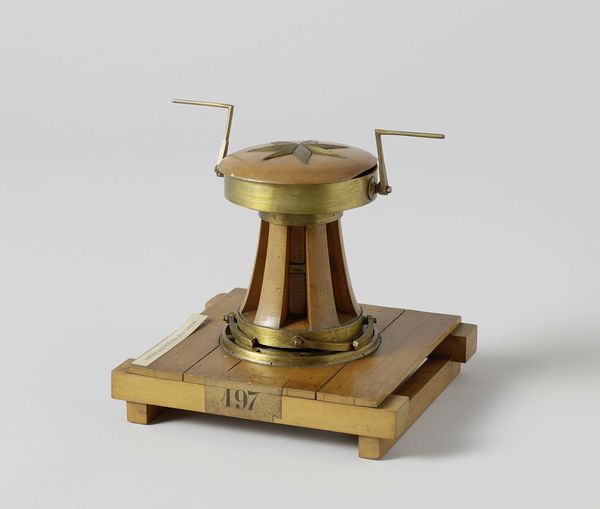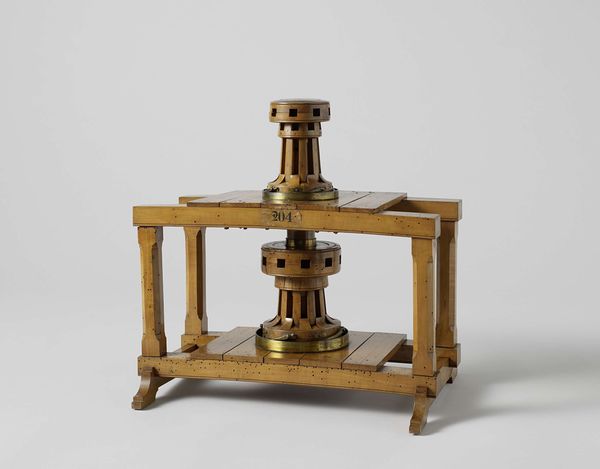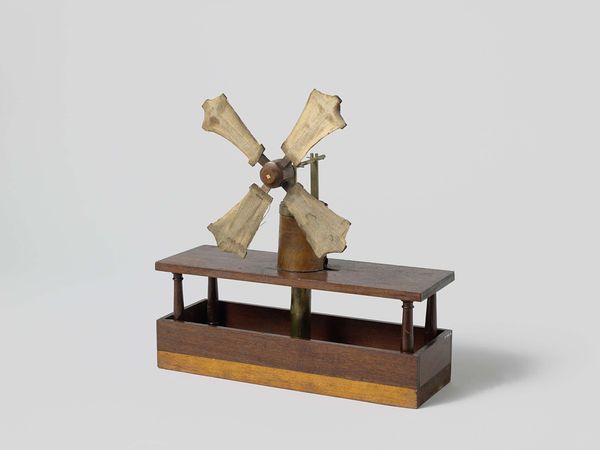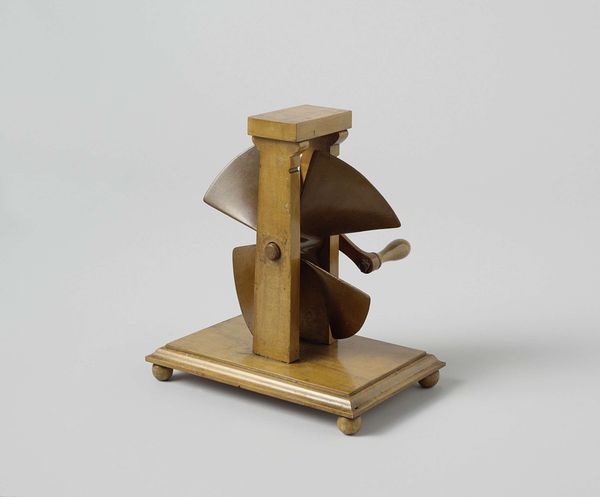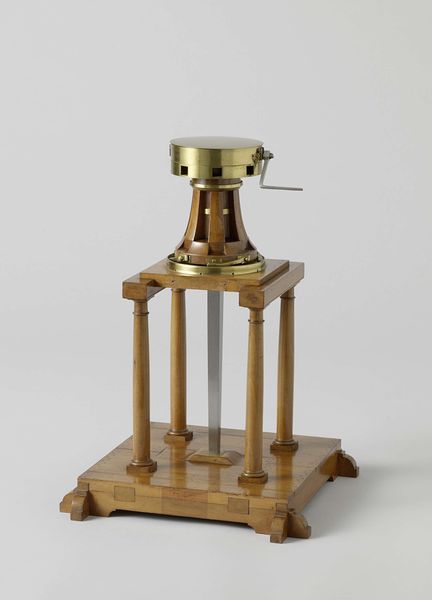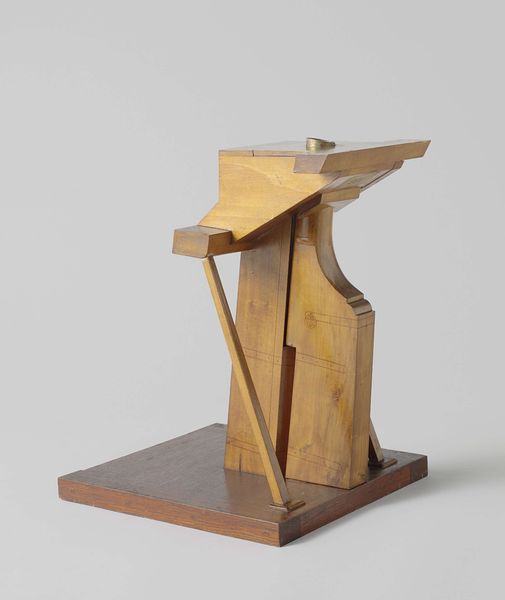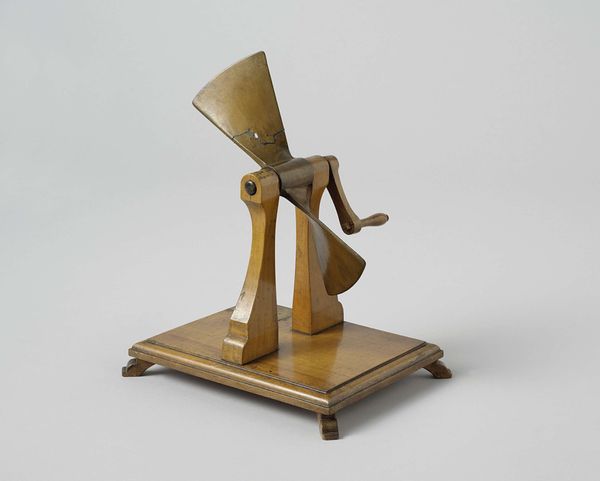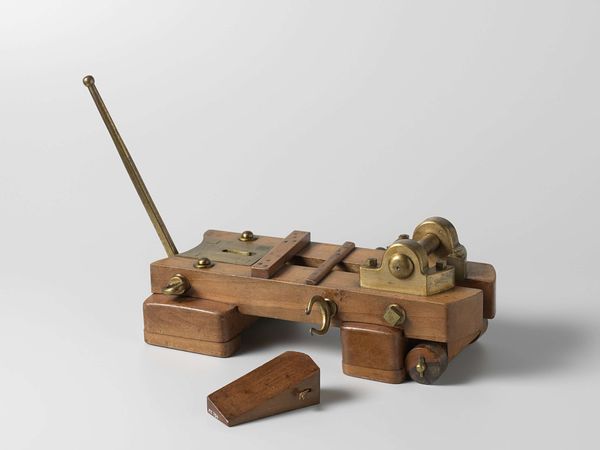
brass, metal, sculpture, wood
#
3d sculpting
#
3d model
#
brass
#
3d printed part
#
rounded shape
#
metal
#
plastic material rendering
#
virtual 3d design
#
3d shape
#
prop product design
#
sculpture
#
metallic object render
#
3d modeling
#
wood
Dimensions: height 18.4 cm, length 22 cm, width 18 cm, height 22.5 cm, width 82.5 cm, depth 22.5 cm
Copyright: Rijks Museum: Open Domain
Editor: This is a Model of a Capstan, crafted around 1850. It looks to be made of wood and brass, maybe other metals, and signed by Rijkswerf Vlissingen. It strikes me as both elegant and incredibly functional, like a piece of machinery disguised as sculpture. What do you see in this piece, from your perspective? Curator: Immediately, I'm drawn to its representation of labor and maritime history. Consider the capstan's function – a machine designed to multiply human effort, often used to haul heavy anchors or sails. Who were the individuals, often from marginalized backgrounds, who operated these machines? Their physical exertion, their social positioning, and their relationship to the technologies that shaped global trade and colonial expansion are embedded in this object. Editor: So, the capstan isn't just a tool, it's a symbol? Curator: Exactly! It speaks volumes about power dynamics. This model, while seemingly innocuous, is born out of a period of intense maritime activity directly linked to colonialism and exploitation. By thinking about the stories of those who toiled, we can understand the artwork within its larger historical and social context. Who benefited from the efficiency the capstan afforded? Who were its users, and how did it affect them? Editor: That makes me think differently about it. I was focusing on its form and craftsmanship, but not the human element. Curator: Precisely, we can see this model as an archive, holding traces of untold narratives. It urges us to examine not only its aesthetic qualities but also the historical weight it carries. And perhaps even ask ourselves about the legacies of these pasts that continue to reverberate in the present. Editor: Thank you. I hadn’t considered the connection between maritime labor and colonialism here. Curator: It's all about reframing our gaze. Art objects, even seemingly simple ones, offer profound entry points for engaging with complex social realities.
Comments
No comments
Be the first to comment and join the conversation on the ultimate creative platform.
